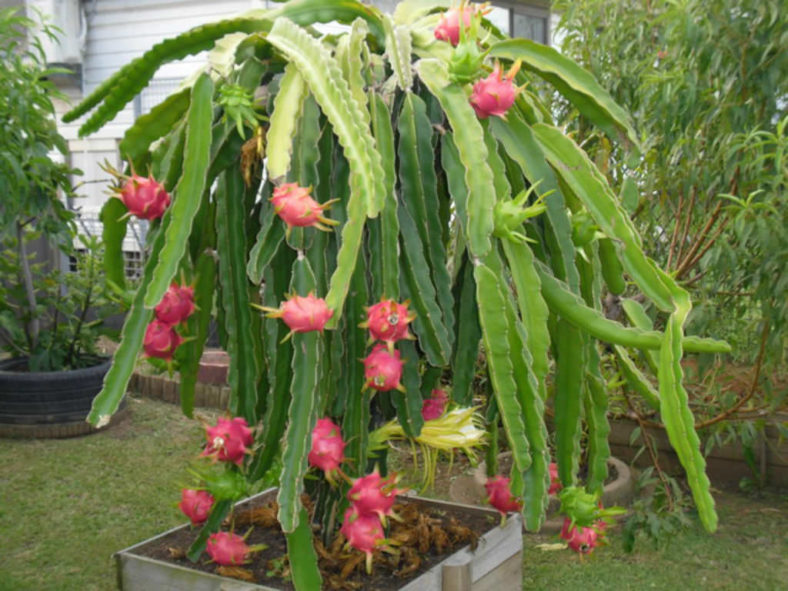1. **Botanical Information**:
- **Scientific Name**: Selenicereus undatus
- **Family**: Cactaceae
- **Genus**: Selenicereus
- **Common Names**: Dragon Fruit, Pitaya, Pitahaya
2. **Physical Characteristics**:
- The plant is a climbing or vining cactus with large, white, night-blooming flowers.
- The fruit is typically oval or pear-shaped and can have pink or yellow skin, with green, scale-like spikes.
3. **Fruit Description**:
- The flesh of the fruit is sweet and juicy, often with tiny black seeds.
- The most common variety has white flesh with black seeds, but there are also red-fleshed varieties.
4. **Cultivation**:
- Dragon fruit is grown in tropical and subtropical regions, including Southeast Asia, South America, and parts of the United States (e.g., Florida, California, and Hawaii).
- It prefers well-drained soil and needs support to grow, often by climbing on trellises or other structures.
5. **Nutritional Value**:
- Dragon fruit is low in calories and a good source of vitamin C, fiber, and various antioxidants.
- It is also rich in several minerals, including iron, magnesium, and calcium.
6. **Health Benefits**:
- Dragon fruit consumption may support immune health due to its high vitamin C content.
- The fruit is also known for its potential to aid digestion and promote healthy skin.
7. **Culinary Uses**:
- Dragon fruit is typically eaten fresh, either by cutting it in half and scooping out the flesh or by peeling the skin.
- It is used in fruit salads, smoothies, and desserts. The flavor is mildly sweet and often likened to a combination of kiwi and pear.
8. **Cultural Significance**:
- Dragon fruit has cultural significance in various countries, often associated with luck and prosperity.
- It is sometimes given as a gift during special occasions.
9. **Commercial Value**:
- Dragon fruit is a commercially important crop, with international trade. Its popularity has been growing due to its health benefits and unique appearance.
10. **Harvesting**:
- The fruit is typically harvested when it reaches a vibrant color and gives slightly to pressure. It should be ripe but not overripe.
11. **Challenges**:
- Cultivation can be susceptible to pests, and the plant is sensitive to cold temperatures.
12. **Varieties**:
- In addition to the common white-fleshed and red-fleshed varieties, there are hybrids and other species of Selenicereus that produce different types of dragon fruit.
Dragon fruit is not only a delicious and visually striking fruit but also offers numerous health benefits. It has gained popularity in many parts of the world and is commonly found in supermarkets and farmers' markets.





